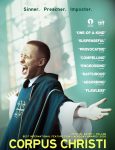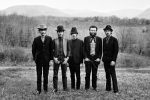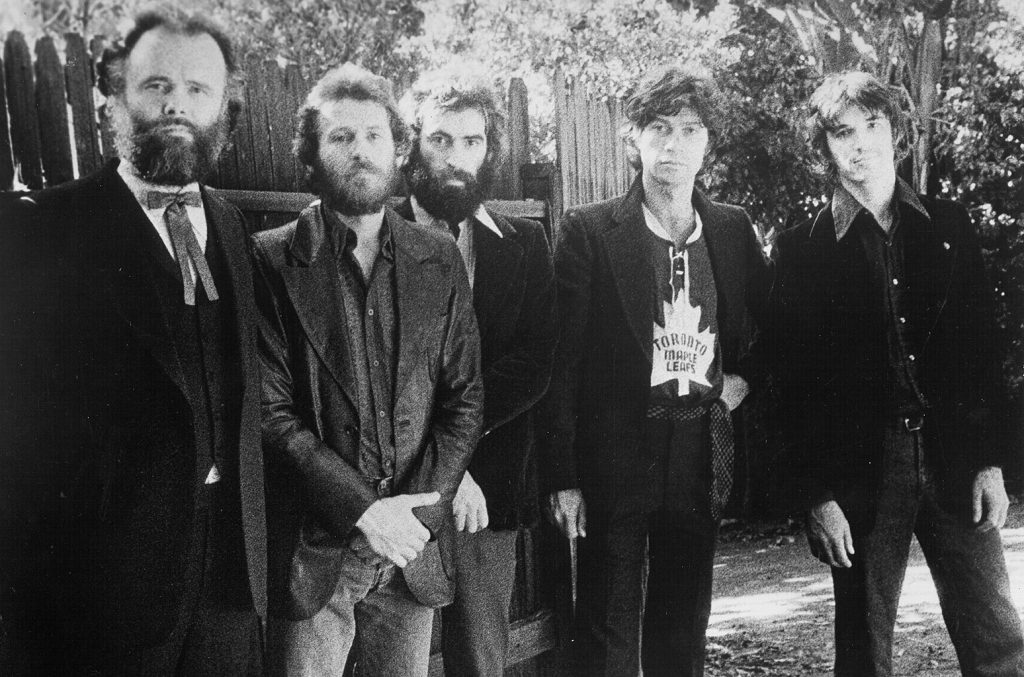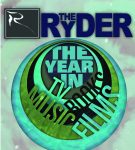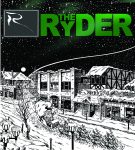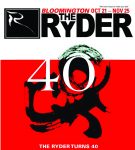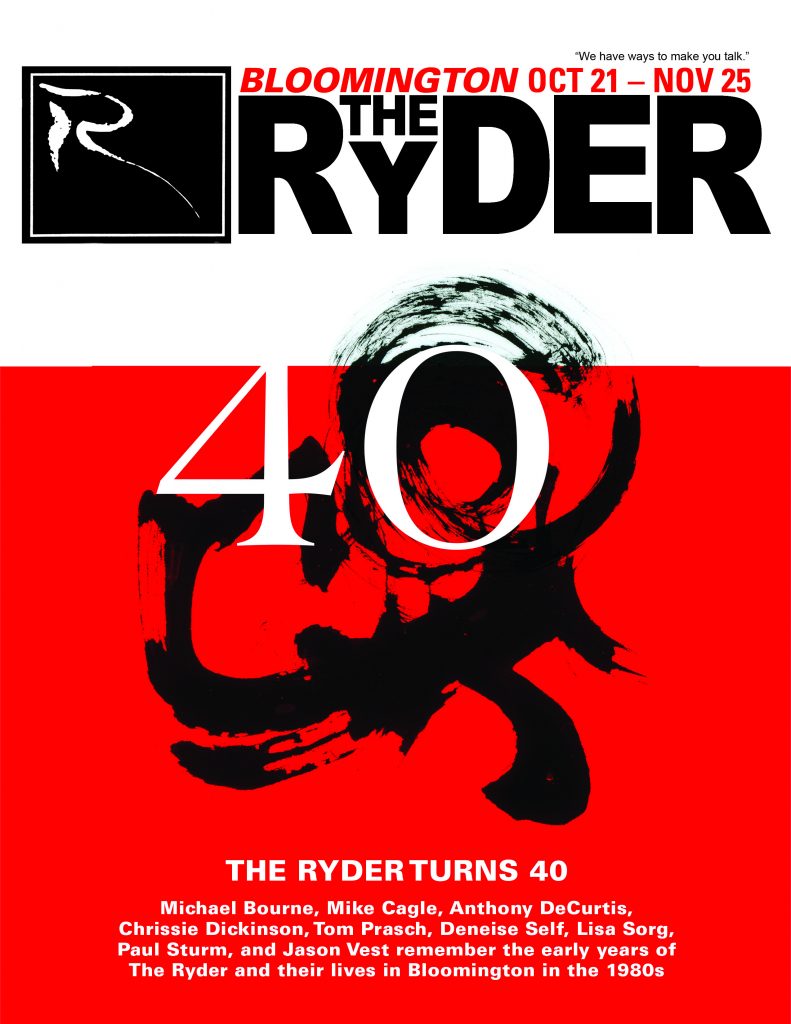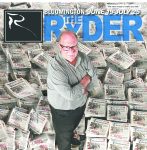Look Who’s Talking:
BOB ZALTSBERG
After 33 years, Bob Zaltsberg retired as editor of the Herald-Times. Former city councilman Tim Mayer sat down and talked with Bob about his teenage years in a small Indiana town, his time at the H-T, and the future of journalism
Photo by Jeremy Hogan
The
old saying “we
went to different high schools together” best describes my relationship with Bob
Zaltsberg. Bob recently retired after 33 years as editor of the Herald-Times. I had retired from Bloomington’s City Council in 2017
after serving many years.
Before
the internet, our friendship was limited to telephone or office visits about H-T stories and editorials. Our
conversations shifted to email with the advent of electronic communication.
My friend always listened to my concerns and
compliments with great respect and understanding. I learned a lot from him.
When
I was approached to do this interview, I welcomed the opportunity. We met, one
Thursday afternoon, at the Uptown Cafe for coffee and conversation. I learned a great
deal more about Bob and hope you will too.
Tim Mayer: Why don’t you tell us a little
about how you got from Winchester, Indiana to Bloomington?
Bob Zaltsberg: I went from Winchester to Oxford, Ohio. I was an English major and I thought I wanted to get into radio. I always liked the whole current events thing. I did some dabbling in radio classes. I had an emphasis in journalism so I did some journalism classes. For a variety of reasons the newspaper thing seemed like a better fit for me. I wasn’t really that good at, or thrilled with, the radio stuff.
So I
got a degree in English but my emphasis was on media; I wanted to get a
newspaper job. My first job was a twice-weekly paper in Plainfield, Indiana. I
had a friend on the staff here in Bloomington named Phil Coffin, who still is a
copy editor with the New York Times.
Phil and I were former roommates at Miami and he called me one night and said,
“a job has opened down here in Bloomington–you might want to apply for
it.” I applied for it and so here I am. This was shortly after Watergate.
The
next logical step from here was always Louisville; the Courier Journal and the Louisville
Times were great papers. Phil, had moved on to Louisville. So I thought maybe I’ll do that. But
before I got the opportunity, the
managers here in Bloomington said “we’ve got our eye on you to be editor of the
paper in the next 3-5 years.”
It actually
was about 2 years later. Bill Schrader was my mentor and a great news man. I learned a
whole lot from him, he was a nice guy. There were people in Bloomington,
because he was a conservative, that probably didn’t have a lot of great things
to say about the job he did but I think the people who were in government and
in the business community probably did really appreciate the work he did. I
didn’t realize how good he was until I’d been in the job for a few years.
TM: I’ve heard you talk about your
parent’s department store in Winchester, Indiana. How you started working there
as a teen and how the advent of a shopping mall at the edge of town forced the
closing of your parent’s store. I wondered how you thought about Bloomington’s
growth and development downtown and on both the East and West sides of our
community. And, the impact it has had on Bloomington overall.
BZ: I think that Bloomington was in the
same situation in a lot of ways that a lot of downtowns were in the 1970s. A
lot of the retailers were starting to go elsewhere, College Mall, Kmart on the
west side. At that point the group and the City under [then Mayor] Tomi [Allison]
and the County Government, they all really got together and created this
synergy downtown. As the small town kid who grew up in a department store on a
downtown Indiana square, I was all for it. I think local business and a
thriving downtown are just absolutely crucial to a place where I would want to
be. I think that’s true for many other people.
The
obvious follow-up is what about now? I still think it’s a fabulous downtown
even though it’s had some growing pains. All the people that have moved in, the
university, high-end apartments and all that, all the growing pains. But oh my
goodness, the energy in downtown Bloomington, compared to a lot of cities, it’s
just fantastic. My brother was in town from Orlando the other day and he was
really taken just by what downtown looks like and how much activity there is.
TM:
We took a trip up to Lake Michigan, sometime in the summer. We get up around
Michigan City. There’s a city that did it wrong from the beginning. They built
a consumer mall on the edge of town, and they certainly turned their main drag
into a pedestrian road and just killed it.
BZ: I
don’t know what Burlington, Vermont is like today, but they’ve made a lot of
their downtown into a pedestrian mall. They relocated their big box stores to
the outskirts of town, way out. I haven’t been there in years, but the one time
I did visit I really appreciated how they had planned: “we’re not going to say
no to these big box stores, we’re gonna put them in a place where they don’t
really affect downtown Burlington.”
TM:
When Sue and I moved to Bloomington we had a five month old son, it was in
January 1968, and at that time State Road 37 was a two lane highway, both north
and south out of Bloomington. A trip to Indianapolis was dangerous. I almost
ran over a concrete block in the middle a lane one time. Over time SR 37 was
divided and made limited access. In the 80s, the discussion to build Interstate
69 began in earnest and the lines were drawn between those for and those
against. The H-T was on the side of “build
the highway.” It was a difficult
decision for you to find yourself in, and now that it’s here and what are your
feelings and what do you see for Bloomington’s future and our special
relationship to Indianapolis and are we becoming a community to Indy?
BZ: I
personally was never too concerned about whether the highway was or wasn’t
built. I thought Bloomington would thrive and survive whether there was I-69 or
not. Our newspaper’s editorial position
was always in favor of I-69–a lot of decisions are made by our editorial
board, The ownership–Scott Schurz and the Schurz family–they were strongly in
favor of the highway. I
was personally ambivalent about it, but I didn’t see the significant harm some
people thought it might be. I did agree with the values that might come with
it. I don’t pretend to be an expert in the cost-benefit analysis and all that.
I’ll leave that to people like Andy
[Ruff]. I admired the people that fought
against it but as a newspaper and looking out for our editorial board position
we thought it was the best thing that could happen for Bloomington.
We
won’t know, until twenty to thirty years from now. But people fought I-37, the
4 lane, when it was going to be built. People fought Lake Monroe when it was
going to be built. And those things all turned out to be the right decision. As
part of the editorial board at the time, I was confident that if the decision
was made it wouldn’t be the wrong decision. I was just, as I said, kind of
ambivalent. I thought Bloomington was going to be a great place to live and be
no matter what. I love to be able to get on the highway on the outside of town
and get to Martinsville in just 15 minutes. I love to be able to get to
Evansville, personally, in two hours. And I see the great benefit of being able
to get to the Indianapolis Airport and Indianapolis in a shorter amount of
time.
As
far as whether we’re becoming a bedroom community of Indianapolis; I don’t
think so. I think we’re always going to be apart from Indianapolis and every
other city in the state of Indiana. There are a lot of people that drive to
Indianapolis and it will make it easier. But it will make also make it easier
for people that live in Indy that want to drive over here. Not a very deep
answer, might be controversial to some. I didn’t have to lose my house or my
farm because of it either. I took a broader view, I did my job and we evaluated
it as a newspaper and as an editorial board. I don’t think it’s a bad thing for
the greater community. I think it’s a good thing.
TM:
For a number of years you were the moderator for the Ivy Tech O’Bannon
Institute’s “Conversations” event. You had an opportunity to meet and interview
some really interesting people. George McGovern in 2007, Paul Begala in 2008,
Eugene Robinson in 2009, Arianna Huffington in 2010, Richard Dreyfuss in 2011,
Cokie Roberts in 2012, Judy O’Bannon in 2013, John R. Whikehart in 2014, and
Shiza Shahid in 2015. I must admit that the Richard Dreyfuss interview stands
out to me. But I don’t want to step on your story. Can you share some of your
impressions from those interviews?
BZ:
Absolutely! The Richard Dreyfuss interview was the worst interview I’ve ever
done because all I got to do was ask one question and basically RIchard just
took over and did a soliloquy on the stage. It was great from a standpoint of
just sitting back and watching; it made the job really easy. But, Richard was
just an unusual character. It was enjoyable though.
With
the rest of those interviews I got more comfortable, you know with repetition
you get more comfortable. I’m sure the interviews I did with people like Cokie
Roberts, she was great. She was so much fun to talk to, and I was able to meet
her where she was, she’s a journalist and I’m a journalist. While she’s a world
famous journalist, I felt like I could handle myself and talk to her about it.
So it was really fun for me to get to talk to her.
George
McGovern was one of my all-time heroes. I did a column a few years ago. I
called the county clerk’s office in Randolph County, Winchester to find out how
many Democrats voted for McGovern in 1972. Because I was one of them, but I
wondered how many other people voted for him. And I was kind of surprised to
find out it was something like 2700 or 1700 or something. So it was certainly
in the thousands, but he still lost by like 65% to 35% in Randolph County,
which is a very Republican county.
Arianna
Huffington was a hoot to talk to because she was interesting and she was so
cutting edge with the Huffington Post.
Judy O’Bannon is such a gracious lady. John Whikehart is such a funny guy.
Those interviews were a lot of fun. As I said, as time went on I got better at
them. I just figured, it’s me and this other person and we’re going to have a
conversation. They have much more stuff to say than I do, I just need to draw
them out.
TM:
When I moved to Bloomington in 1968, Westinghouse, RCA, Otis Elevator and GE
were going gangbusters. Over time, one-by-one, they shuttered their plants and
moved on, GE being the last to go. A great loss for our community with many
lives being disrupted. As best we could, the community stepped up to help with
the transition for those affected by the closings. We’ve transitioned from
assembly line fabrication (elevators, television sets, electric transformers,
and side-by-side refrigerators) to medical assembly, automotive part
manufacturing, pharmaceutical development and packaging, as well as technology
driven ideas and products. Bloomington has many innovative people looking for
the next big breakthrough. How do you view the transition from where we were in
the 70’s to today and beyond? Are we doing enough to give everyone the basic
skills to earn a well-rounded living?
BZ:
That’s a great question; you went through the history and it’s pretty
staggering when you think about it. The first color TV rolled off the assembly
line down there and there were 8,000 people working at that plant. That’s
stunning to think about, when GE was in its heyday and we thought GE was a huge
employer there were 3,500 or 3,200. So 8,000 people working at RCA, 3,200
working at GE. Probably close to 1,000 people worked at Otis. Westinghouse, of
course they were contaminating the community, but several hundred people were
working there–if not a thousand.
Thank
goodness Bill Cook and Gayle Cook decided to make medical devices in their back
room at Art Villa. It’s such a great historical point for Bloomington. But even
besides manufacturing it’s helped to create this innovation community. We can’t
separate Bloomington and IU. I think a lot of the reason Bill Cook was
attracted here was because the university was here. I don’t think Bill Cook
would have just gone to any community. He could have gone to a lot of different
places but he came here. A lot of companies come to Bloomington because we’ve
got a university and we’ve got all this intellectual capital.
Now,
we’re entering this new phase of startups and innovation I can’t pretend to be
an expert in. But, I’ve thought enough about it to know you just got to have
smart people, you’ve got to have a good quality of life, you’ve got to have a
place where people want to be.
For
part two of your question; there are a lot of people that need to be trained to
be able to take these jobs in the future. Are we doing enough to train them? I
think Bloomington and MC will always rise to it. I mean again, go back to Cook.
He sees the need for more educated workers so he just creates his own
educational program to try and make sure they have their people trained up and
that other people can learn from them. The argument about good jobs and good
jobs for everybody in Bloomington is gonna be a constant. Not everybody is
going to be suited for the creative and innovative jobs. I don’t have the
answer for how we’re gonna train people for every job that’s going to come
here, but I think Bloomington’s up for the challenge. We’ll find some
innovative ways forward.
TM:
We could talk a little bit more about what Cook is doing and things like Ivy
Tech and what the Chamber of Commerce is doing, they’re all components.
BZ:
Tim, you’re absolutely right. I’m glad you’re here to ask these questions
because they prompt a lot of thoughts. IU of course is the big dog, it’s got
its shadow over everything. But, Ivy Tech is a huge part of our community now
and they are very nimble with being able to come up with programs that fit
workers who industries. You know like French Lick, they needed a bunch of
hospitality workers down there and Ivy Tech was able to create a program to
train them. Same thing with the MPRI, the Proton Radiotherapy Institute, when
they needed workers for proton therapy jobs, Ivy Tech was able to train people
for those jobs. But then you mentioned the foundation, stuff that the community
foundation and United Way. School corporations are doing things with early
childhood education. They understand that you got to get people early. Young
people from 3-5 years old are gonna benefit from these programs for the rest of
life. Those groups — I can’t say enough about them.
TM:
That shows that the community does understand what the problems and the issues
are and they’re willing to take a shot at it. So far we’ve been talking about
our shared experiences and observations about Bloomington and the impacts of
time and change. Your recent retirement as editor from the Herald-Times at a crucial time in the news industry gives me an
opportunity to explore your views on the coming changes. I’d like to get a
little closer to your line of work and hear your thinking on how the changes in
the news industry will impact how we receive our daily news.
BZ:
There’s been a transitional time in the past 20 years. I was the editor for 33
years, probably the first 10 years or so was a period of growth. We built our
circulation up to a high of close to 32,000, mostly the print copy, and then
starting to dabble with the Internet and digital. But then, digital just became
the thing that overcame everything else. Circulation has dropped by more than
half since then. But the readership of the H-T is still probably about the same
or up because of all the online readers. And I know we could all talk about the
H-T being a paid subscription based behind a paywall but all the photos are
free, all the ads are free, all the videos are free, all the headlines are
free. So more people are still going and seeing and reading the H-T everyday
than there were at the peak of it. But they’re not spending as much time with
it and they’re not paying as much for it, if they’re even paying at all. How
are you going to pay for news? That’s the big issue. The H-T is one of thousands
of news organization that’s trying to figure it out. Both in print and
commercial television they’re trying to figure it out. And commercial
television isn’t so much who’s going to pay for news but who’s going to pay for
content and how people want their content delivered. The newspaper business
itself still has a strong place. It still has a strong audience, but that
audience is getting older all the time. My last few years there we were trying
to figure out how to engage people better, how are we going to provide more
value in print? And those are questions that the next generation of H-T leaders
are going to have to deal with.
BZ:
Do you want to talk a little bit about how the H-T was recently sold to
Gatehouse Media? What can we anticipate going forward?
TM: I
retired on Jan 31, it’d been about a year in the making So I wasn’t pushed out
by Gatehouse or anything else. But I did learn about 2 weeks before that the
company was going to be sold to Gatehouse Media. And the rest of the staff only
learned about 5 days before. So I retired the day Gatehouse Media took over
from the Schurz family.
It was
a sad day for me, I sat in my office on that last day with Scott Schurz and
Scott and I reminisced. The day that he walked out, when he left Schurz
Communications, he didn’t leave the company but he left the publicity side the
same day I did. It’s sad; family owned media companies valued their employees
and their communities and wanted to provide value and wanted to take part in
the community life. I say that as a positive sentence, that’s what family owned
media wanted to do.
How are you going to pay for news? That’s the big issue. The H-T is one of thousands of news organization that’s trying to figure it out.
I don’t know about Gatehouse, I can’t say they don’t want to do those things. But I can say they do have stockholders that require a certain amount of return in their investment. It’s different than a family owned paper. Every three months there’s a stockholder report, and every three months there’s somebody somewhere making decisions about which of the Gatehouse Media operations are making enough money and which ones aren’t. That’s bound to affect some of the properties–whether it’s Bloomington, Bedford, Mooresville, Martinsville or somewhere in Illinois or Texas. I don’t know, but it’s going to affect some of them. We didn’t have those pressures with Schurz
TM:
What do you think are the best trends in journalism today? The worst?
BZ:
The best trends are trying to speak in various languages. That is: good
investigative work in print that can also transform to digital in either audio
or video. I think podcasts have been great. Podcasts are a really nice trend
where people can tell a longer story in a serial form. What we always tried to
do at the H-T in the last five years
were watchdog reporting, that is trying to dig deeper on stories, and digital
engagement. In the media those are two things that you have to have.
Bad
trends are the idea that anybody thinks they can be a journalist whether they
have any training or not. They’re willing to put out stories that aren’t vetted
or are basically just their point of view. They haven’t checked the facts and
they don’t really care to check them. Anybody can be a publisher now just by
creating a website. In a way it’s really egalitarian in that you don’t need
money now to buy a printing press you just can publish online. There are some
very good online operations that have grown off of this — but there are an
equal number, or many more, where people can just package up something as news
and it’s just propaganda. It’s not well sourced; it’s inaccurate; it unfair.
They don’t try to subscribe to any journalistic principles. I know people don’t
like the media that much today but I think when you get down to a local level
or any professional media level, people have principles they follow. They want
to be right, they want to be truthful, they want to get all sides of the story.
A lot of the people that try to be journalists today don’t even care about
that.
TM: Someone
once described the New York Times as
a symphony and the Washington Post as
jazz combo — what kind of musical group is the H-T?
BZ: Great
question! I would say the H-T is more
like a marching band. We’re gonna play a lot of popular songs and we’re gonna
keep a beat going all the time. You got to just keep marching, keep going
forward.
TM:
The Jefferson Street Band
BZ: I
love those guys! We’re probably not as cool as they are, we dress a lot more
conservatively than they do. I love that question. You know, a marching band,
it’s a lot of different people, you have different sections like we have a lot
of different beats covering different things. We have different departments
that have to do different things, there are a lot of different parts of a
marching band like there are a lot of different parts of a newsroom. You’re
always trying to push it and move forward with some sort of a rhythm. Whether
it’s daily or hourly online, you gotta have a certain kind of rhythm to what
you’re doing.
TM: A
lot of change has happened since you retired from the H-T. I understand that
you have accepted a position at IU Bloomington with WFIU. Can you give us some insight
on the changes at the H-T and tell me about your new position at IU?
BZ: We’re
talking today two days after my successor J.J. Perry announced he was going to
leave the paper after less than three months. At the end of three months he’s
gonna leave. Really sorry about J.J. He’s a great guy, a great journalist. But
for some reason his time in Bloomington just didn’t fit what he wanted to do.
He wasn’t pushed out, it wasn’t anybody’s decision other than J.J.’s. I’m sorry
that it turned out that way.
I
don’t know who the next leader of the H-T
will be, and I don’t know what it’s like working under Gatehouse Media. I’m
hopeful, I’m a big supporter of the Herald-Times.
I love the staff they’ve got down there, the newsroom staff are people that I
worked with and they’re almost all people that I hired. They’re wonderful
people and they work really hard and they care about the community. I feel very
strongly that people should support the H-T
because having a local newspaper is a really important thing.
As for myself, I teach at IU.
I’m going to continue to teach one course a semester at the media school. I
just took a very part time job, very part
time — I have to stress that — at WFIU working with Sara Wittmeyer and the
staff there on a project called city limits. It’s basically stories about Bloomington that people will email or call in. The
leadership at WFIU thought that I was in a unique position to be able to
contribute to that. I think that after my years at the paper, I can’t disagree
with them. I did Noon Edition as a
volunteer for 20 years. So I worked for them for 20 years without being paid a
thing. Now I’d get an hourly rate, well it’s more of a contract. But I’m not
doing it to get rich, I’m not doing it for the money, I’m not doing it for the
glory, I’m doing it so young journalists can continue to tell good stories
about Bloomington.
TM: As one who’s recently retired
myself, I applaud your decision to keep going because if you don’t you’re in
trouble. The other thing is that I’m sad to see JJ go but I really admire him
for making this decision — if you’re not
happy doing what you are doing its time to get out.
BZ: I think so, and I can speak from
experience, that when it was time for me to get out I still liked my job. I
didn’t like it as much as I used to and I didn’t like it every day. I felt like
I had already turned 65 years old, I could see myself continuing to work for a
while but I don’t know what else I could do. I didn’t want to get to the point
where I don’t like working and I don’t like my job. As I said, my retirement
was in the works for about a year. I was quite happy to retire when I did. When
I found out about the sale I thought somebody else is going to have to lead
this transition because I don’t know that I have the energy or the interest.
TM: You retired under the Schurz’s
family ownership.
BZ: They were a great family to work
for and Scott still has a home in Bloomington and they’re a good Hoosier
family. They still have a very strong company — it’s just not a newspaper
company.
TM: I’d like to thank you for
sitting and talking, and thanks for all your time at the H-T. You really did make a difference in Bloomington. I’m sure
people have told you that.
BZ: I’ve heard it more since I
retired than I did when I was working [laughs]. Did I tell you how great you
were as a city council member?
TM: [more laughter]



